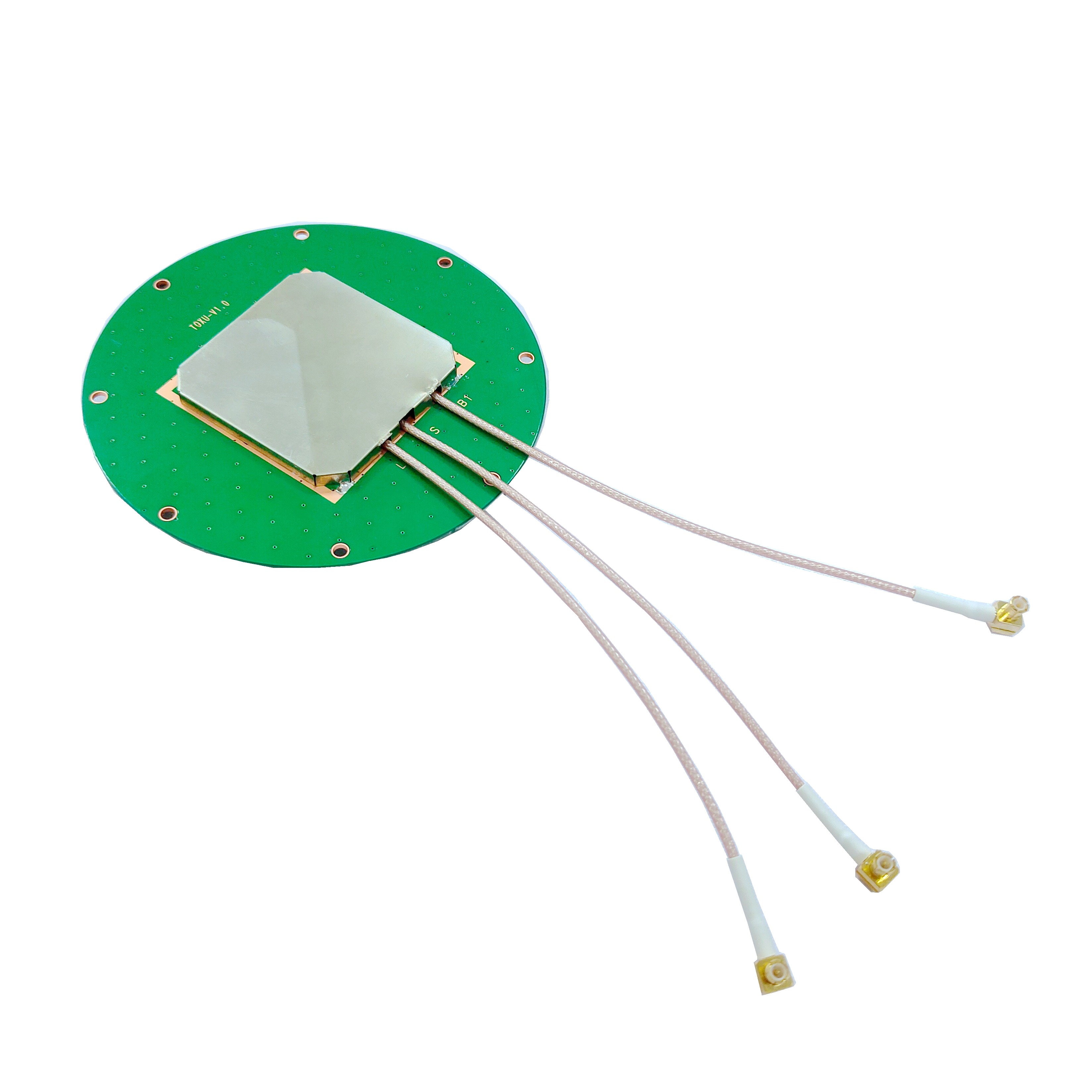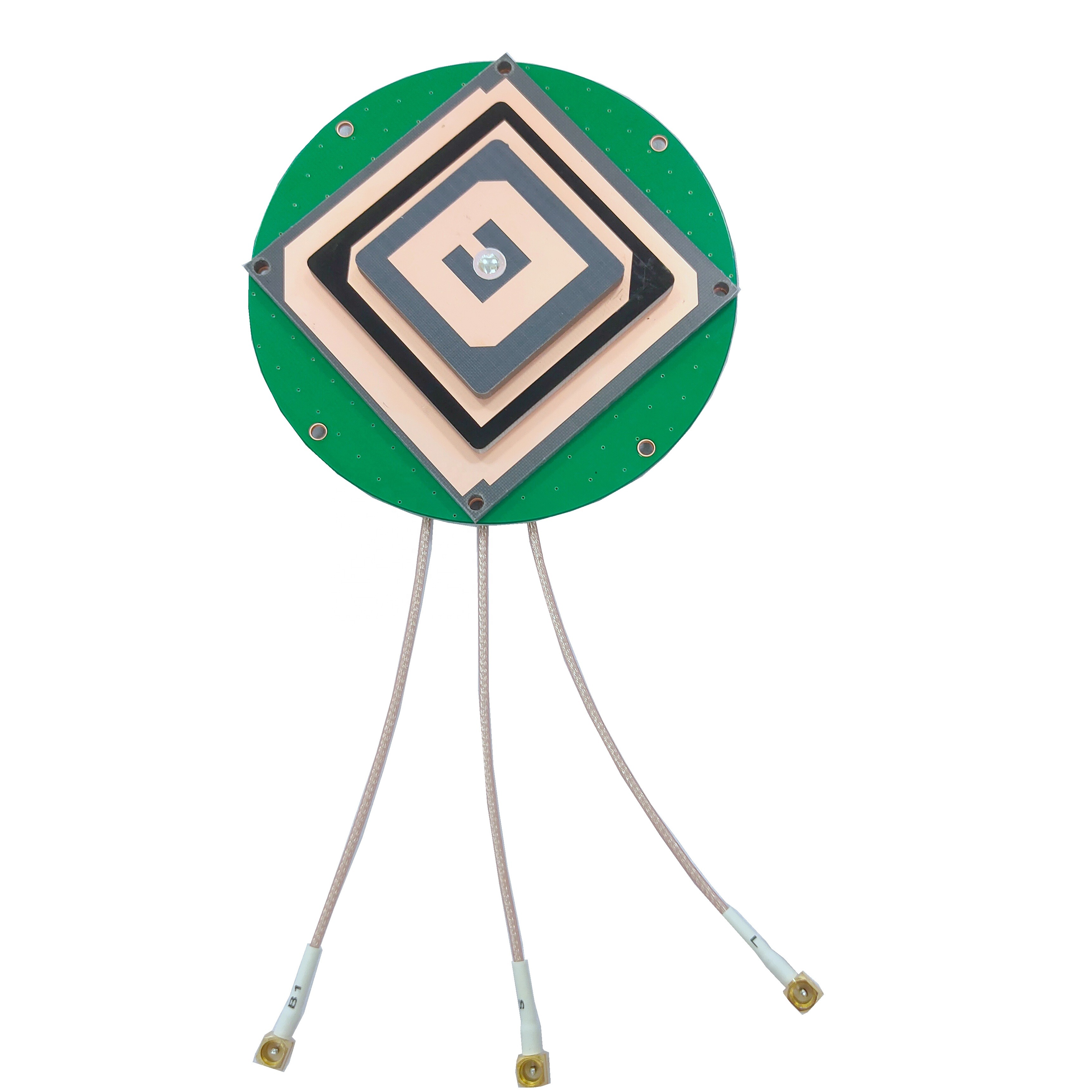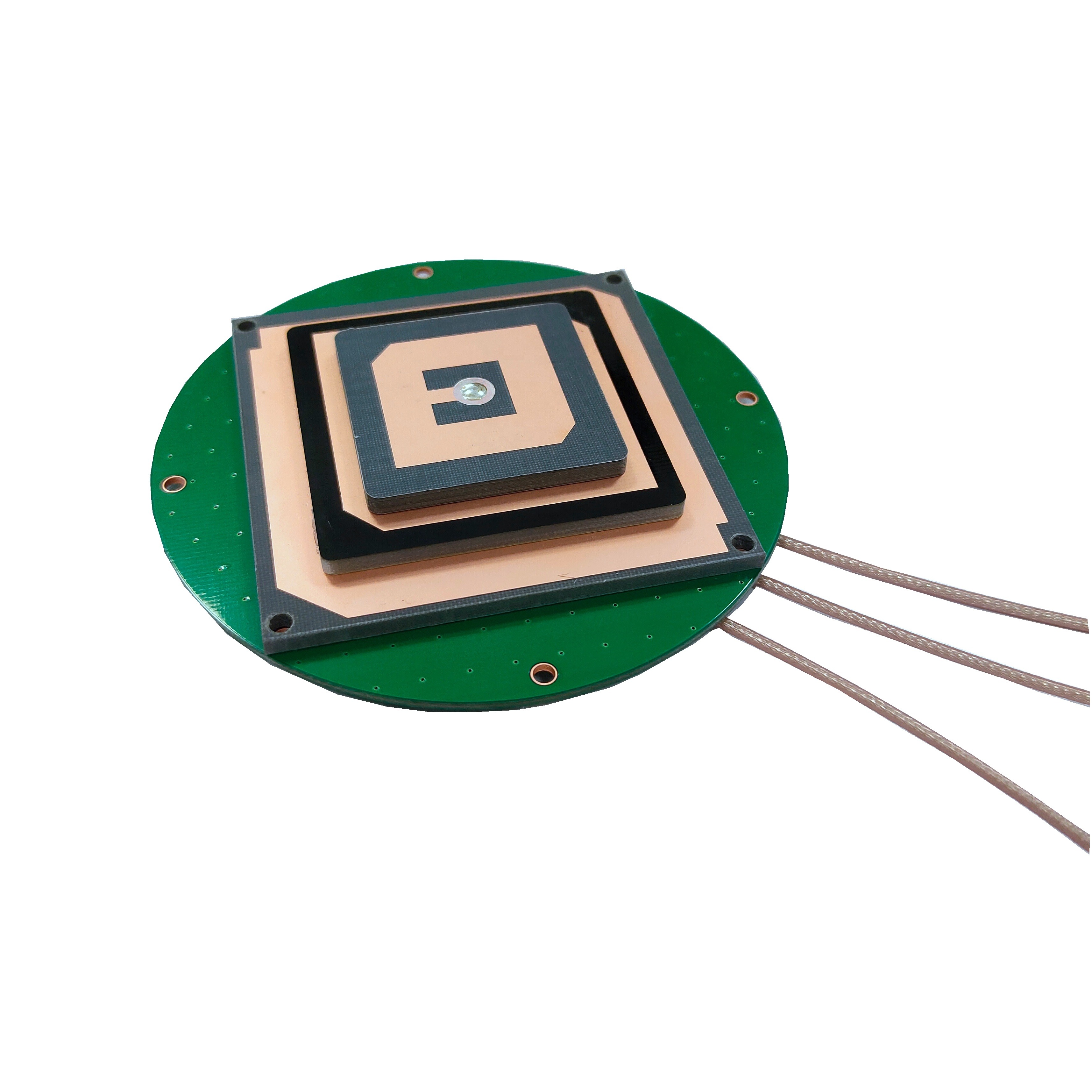A defining feature of this antenna is its versatile coaxial connector options: SMA, MCX, MMCX, HRS, and IPX. These connectors are carefully chosen to accommodate the diverse integration needs of embedded systems, where space constraints, mating cycles, and environmental conditions vary widely. The SMA connector is a stalwart in RF applications, known for its robust threaded design that ensures a secure, vibration-resistant connection—ideal for industrial machinery or outdoor equipment where reliability is paramount. SMA connectors offer excellent signal integrity and are compatible with a wide range of coaxial cables, making them a popular choice for applications where the antenna is mounted externally to the device but still requires a compact footprint.
For space-constrained environments, the MCX and MMCX connectors provide miniature solutions. MCX connectors, with their push-pull locking mechanism, are approximately 30% smaller than SMA, making them suitable for handheld devices, drones, or compact surveying tools. MMCX connectors are even smaller, designed for applications where every millimeter counts, such as wearable technology or miniaturized robotics. Both MCX and MMCX offer high mating cycles (up to 500 for MMCX), which is valuable for devices that require frequent disassembly or maintenance.
The HRS (Hirose) and IPX (U.FL) connectors cater to ultra-compact designs, often found in consumer electronics and IoT devices. HRS connectors are known for their precision engineering and low profile, while IPX (a type of micro coaxial connector) is widely used in smartphones, tablets, and small-form-factor GNSS modules. These connectors prioritize miniaturization over ruggedness, making them ideal for indoor or protected environments where space is critical but vibration and exposure to elements are minimal. By offering a range of connector options, the antenna ensures seamless integration into virtually any embedded system, from heavy machinery to portable gadgets, without compromising signal quality.
With a gain of 5 dBi, this antenna strikes a deliberate balance between signal amplification and radiation pattern width—key for RTK applications. Gain in GNSS antennas refers to the ability to focus energy in a specific direction, and while higher gain might seem desirable, it can lead to narrow radiation patterns that require precise alignment with satellites. For embedded systems, which are often subject to orientation changes (e.g., a drone banking during flight or a tractor tilting on uneven terrain), a moderate gain of 5 dBi ensures a broad radiation pattern. This allows the antenna to capture signals from satellites across a wide range of elevations and azimuths, maintaining connectivity even when the device is in motion or tilted.
The 5 dBi gain is optimized for the antenna’s frequency bands, ensuring that weak signals from low-elevation satellites (which are critical for RTK accuracy) are amplified sufficiently without introducing excessive noise. This balance is achieved through a combination of antenna design and a low-noise amplifier (LNA) that boosts the signal while maintaining a low noise figure—typically below 1.5 dB. For RTK systems, which rely on carrier phase measurements to achieve centimeter-level accuracy, this balance between gain and noise is essential, as even minor signal degradation can introduce errors in position calculations.
The antenna operates across three key frequency bands: 1575 MHz, 1616 MHz, and 2491 MHz, each serving distinct GNSS constellations and applications. The 1575 MHz band corresponds to GPS L1, the primary civilian frequency for the Global Positioning System, as well as Galileo E1 and BeiDou B1, ensuring compatibility with the world’s most widely used GNSS constellations. This band is the workhorse of navigation, providing global coverage and serving as the foundation for RTK corrections.
The 1616 MHz band is associated with GLONASS G1, Russia’s GNSS constellation, which is particularly strong in high-latitude regions. By including this band, the antenna ensures reliable performance in areas where GPS or Galileo signals may be weaker, such as near the Arctic Circle. GLONASS compatibility adds redundancy, a critical feature for RTK systems that cannot afford signal loss in time-sensitive applications like precision agriculture or emergency response.
The 2491 MHz band is less common in standard GNSS applications but is increasingly used for specialized services, including some regional augmentation systems and emerging satellite communication protocols. Its inclusion future-proofs the antenna, allowing it to support next-generation positioning technologies that may leverage this frequency for enhanced accuracy or data transmission. Together, these three bands ensure that the antenna can tap into a diverse array of satellite signals, maximizing the number of visible satellites and enabling robust RTK corrections even in challenging environments.
To complement its connector options, the antenna supports a range of coaxial cable types: RF1.78, RF1.37, RF1.13, and RF0.81. These cables are classified by their outer diameter (in millimeters), with smaller diameters offering greater flexibility and space savings at the cost of slightly higher signal loss. RF1.78 is the largest in the lineup, providing the lowest attenuation (signal loss) over distance, making it ideal for applications where the antenna is mounted several meters from the receiver, such as in agricultural machinery or construction equipment. Its thicker jacket also offers better protection against abrasion and environmental damage.
RF1.37 and RF1.13 strike a balance between size and performance, suitable for mid-range distances in compact devices like drones or surveying rovers. Their reduced diameter allows for easier routing through tight spaces, such as the internal compartments of a robot or the arm of a surveying tool. RF0.81, the smallest cable, is designed for ultra-short connections, typically within the same device enclosure. While it has higher attenuation than larger cables, its tiny size makes it indispensable for embedded systems where space is extremely limited, such as in wearable RTK trackers or miniaturized IoT sensors.
All cables feature a stranded copper center conductor for flexibility, a dielectric insulator to maintain 50-ohm impedance, and a braided or foil shield to minimize EMI/RFI interference. This shielding is critical for embedded systems, which often house multiple electronic components (e.g., processors, motors, or communication modules) that can generate noise. By using shielded cables, the antenna ensures that the weak GNSS signals remain uncorrupted as they travel to the receiver, preserving the integrity of RTK corrections.
With dimensions of 90*13.5 mm, this antenna is engineered for embedded applications where space is at a premium. The 90mm length provides sufficient surface area for the antenna’s radiating elements to operate efficiently across its frequency bands, while the 13.5mm thickness allows it to be integrated into tight enclosures—such as the housing of a drone’s flight controller, the dashboard of a precision tractor, or the chassis of a robotic arm. This compact form factor does not compromise performance, as the antenna’s internal design (typically a patch or helical structure) is optimized to maximize radiation efficiency within the limited space.
The slim profile also enables flexible mounting options, including surface-mounting with screws or adhesive, or integration into printed circuit boards (PCBs) for fully embedded systems. For manufacturers, this means the antenna can be seamlessly incorporated into the device’s design without adding excessive weight or bulk—critical for portable applications like handheld surveying tools or lightweight drones, where every gram affects performance.
The antenna offers dual polarization options: RHCP (Right-Hand Circular Polarization) and linear, catering to the specific needs of different RTK applications. RHCP is the standard for most GNSS applications, as it matches the polarization of signals transmitted by satellites. Circular polarization minimizes signal loss caused by the antenna’s orientation relative to the satellite, making it ideal for dynamic applications where the device is in motion—such as drones, autonomous vehicles, or moving agricultural equipment. RHCP also reduces the impact of multipath interference (signal reflections from the ground, buildings, or other surfaces), which is a major source of error in RTK systems. By attenuating reflected signals (which are often left-hand circularly polarized), RHCP ensures that the receiver processes primarily direct satellite signals, improving positioning accuracy.
Linear polarization is offered for specialized applications where the antenna’s orientation is fixed, such as in stationary surveying stations or base stations for RTK networks. Linear polarization (either vertical or horizontal) can provide higher gain in a specific direction when aligned with the satellite’s signal, making it suitable for static installations where the antenna is precisely mounted. While less versatile than RHCP in dynamic environments, linear polarization can offer marginally better signal strength in fixed applications, where orientation is controlled. By providing both options, the antenna adapts to the unique demands of each use case, ensuring optimal performance across diverse scenarios.
A VSWR (Voltage Standing Wave Ratio) of 1.5 underscores the antenna’s exceptional impedance matching, a critical factor for maintaining signal integrity in RTK systems. VSWR measures how efficiently the antenna transfers power from the cable to the radiating element (or vice versa), with a value of 1.0 representing perfect matching. A VSWR of 1.5 indicates that only a small portion of the signal (less than 4%) is reflected back toward the receiver, ensuring that most of the signal is either radiated or received. This efficiency is particularly important for RTK, where weak satellite signals must be captured and processed with minimal loss. Poor VSWR can introduce noise and reduce the signal-to-noise ratio, degrading the accuracy of carrier phase measurements. By maintaining a VSWR of 1.5 across its frequency bands, the antenna ensures that the receiver receives clean, strong signals, enabling precise RTK corrections.
The antenna operates on a DC voltage range of 3~5V DC, a flexible specification that aligns with the power requirements of most embedded systems. This range allows the antenna to be powered directly from common sources such as lithium-ion batteries (3.7V), USB ports (5V), or the internal power supplies of microcontrollers and GNSS modules. The low voltage requirement minimizes power consumption, a key consideration for battery-powered devices like portable surveying tools or drones, where extended runtime is critical. The antenna’s internal LNA is optimized to operate efficiently within this voltage range, ensuring consistent gain and noise performance without drawing excessive current. This balance between performance and power efficiency makes the antenna suitable for both wired and battery-operated embedded systems.
With an input impedance of 50 ohms, the antenna adheres to the industry standard for RF systems, ensuring compatibility with virtually all RTK receivers, cables, and connectors. Impedance matching is essential for maximizing power transfer and minimizing signal reflection, which can cause standing waves and degrade performance. By maintaining 50-ohm impedance across its frequency bands, the antenna integrates seamlessly with the rest of the RTK system, eliminating the need for additional matching networks that would add complexity, size, and cost. This compatibility is particularly valuable for manufacturers, as it allows the antenna to be paired with a wide range of off-the-shelf receivers and modules, simplifying the design process and reducing time to market.
Now, let’s explore the specific applications where this embedded RTK GNSS antenna excels, leveraging its precision and versatility to enable transformative technologies. In precision agriculture, the antenna is integrated into tractors, harvesters, and drones to enable centimeter-level positioning for tasks such as variable-rate seeding, precise spraying, and row guidance. The compact size allows it to be mounted on the vehicle’s roof or drone frame without obstructing other sensors, while the RHCP polarization ensures reliable performance as the equipment moves over uneven terrain. The 5 dBi gain captures signals even in rural areas with sparse tree cover, and the multiple frequency bands ensure compatibility with GPS, GLONASS, and BeiDou—critical for global agricultural operations.
Autonomous robotics is another key application, where the antenna provides the high-accuracy positioning needed for robots to navigate complex environments. Whether used in warehouse automation, search-and-rescue drones, or construction robots, the antenna’s small form factor and versatile connectors (such as MMCX or IPX) allow for integration into tight spaces. The linear polarization option is valuable for stationary robots, while RHCP ensures reliability for mobile units. The low power consumption (3~5V) is ideal for battery-powered robots, extending their operational time between charges.
In surveying and mapping, the antenna is embedded into handheld receivers or backpack-mounted systems, enabling surveyors to collect centimeter-accurate data in challenging terrain. The SMA or MCX connectors provide robust connections for field use, while the RF1.78 cable allows for flexible antenna placement on a survey pole. The 1575 MHz and 1616 MHz bands ensure compatibility with global constellations, and the low VSWR guarantees that weak signals from distant satellites are captured and processed accurately. This results in faster data collection and more reliable maps, reducing the need for rework in critical projects.
Smart infrastructure applications, such as monitoring the movement of bridges or pipelines, also benefit from the antenna’s precision. Embedded into sensor nodes mounted on structures, the antenna provides continuous, high-accuracy positioning data that can detect 微小的位移 (tiny displacements) indicative of structural stress. The linear polarization option is suitable for these fixed installations, while the wide temperature tolerance (inferred from typical embedded designs) ensures performance in extreme weather conditions. The 50-ohm impedance and low VSWR ensure that the data transmitted from the sensor nodes is accurate and reliable, enabling early detection of potential failures.
Consumer electronics is an emerging application, where the antenna is integrated into high-end devices such as professional-grade action cameras or augmented reality (AR) headsets. These devices require precise positioning for features like geotagging ultra-high-definition videos or overlaying digital content onto the physical world with centimeter accuracy. The MMCX or IPX connectors and small cable options (RF0.81) allow for seamless integration into compact device enclosures, while the RHCP polarization ensures reliable performance as the user moves.




































































 Language
Language
 En
En Cn
Cn Korean
Korean

 Home >
Home > 







 18665803017 (Macro)
18665803017 (Macro)













